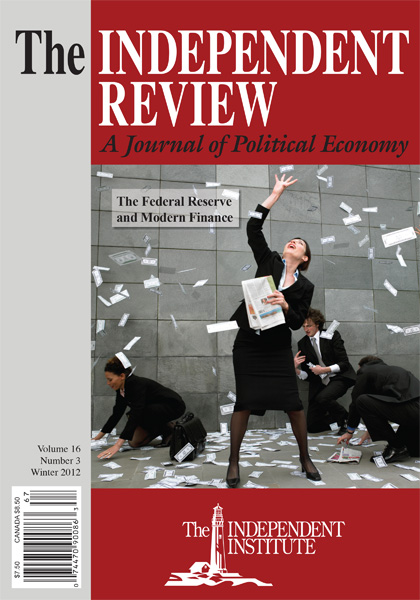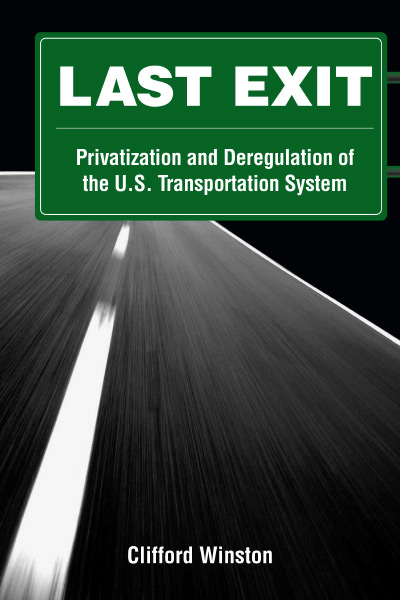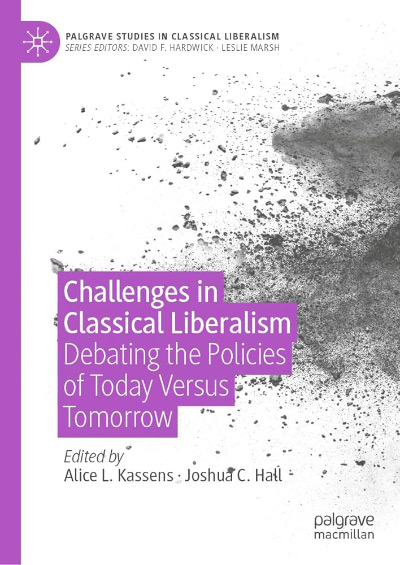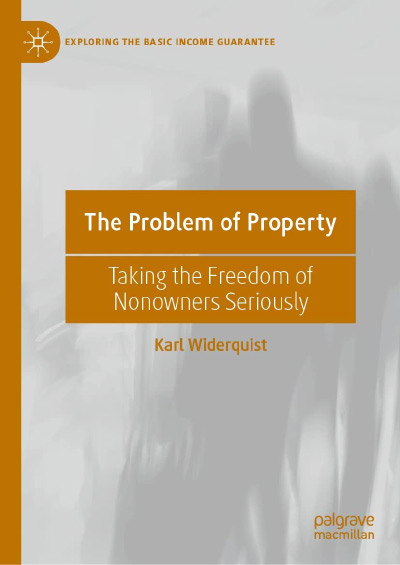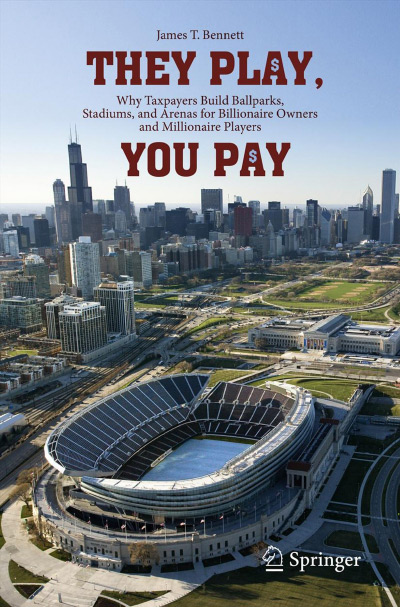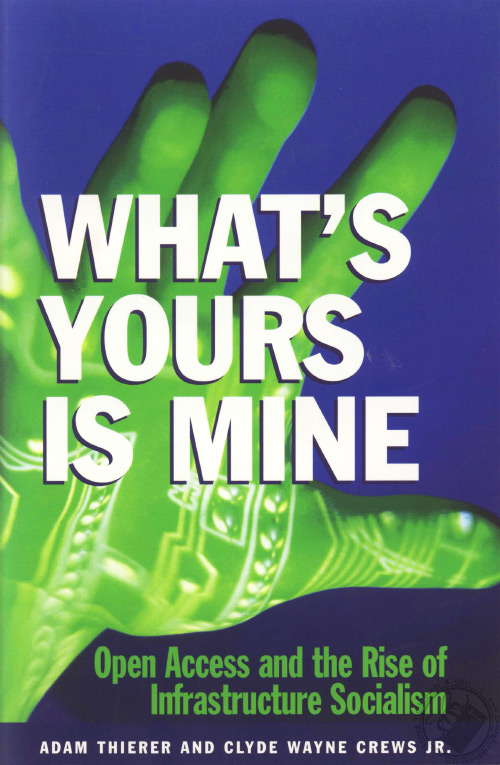More than a quarter-century of studying the American transportation system has led Clifford Winston to the inescapable conclusion that “the evidence of government failure has been overwhelming” (p. 125). His latest book attempts to summarize decades of research findings in an effort to persuade policymakers to take the privatization “exit ramp” out of the mess that government ownership and operation have created.
Regardless of the mode of transportation under consideration, government’s role has on balance been more harmful than helpful. Winston estimates that costs are higher—by about $100 billion per year (p. 14)—and performance has been worse than would have been the case without government intervention.
How can this be? Didn’t government have to step in to protect the public interest? Didn’t government have to rescue travelers and shippers when the private sector failed?
As one who spent more than thirty years working in a government transportation agency, I can attest that government rarely acts out of a desire to protect the public interest. Time after time, faced with mountains of data verifying the difference between a good option and a bad one, government decision makers have repeatedly chosen the worst course available. Some examples from Last Exit llustrate this phenomenon.
Consider how government funds transportation. Unlike private businesses, which must earn money from customers who willingly pay for services rendered, government relies on taxation. This condition attenuates the connection between payment and services rendered. Even though there is a Highway Trust Fund into which highway-user taxes are deposited and from which they are disbursed, both the way in which the taxes are assessed and the way in which the money is distributed undermine efficiency and foster inequity.
The real need for highway expenditures is driven by two major factors. On the one hand, roads must be strong enough to endure the traffic that passes over them. On the other, roads must be built with enough capacity (that is, lane-miles) to handle the number of vehicles that travel on them. Neither the highway-user tax structure nor the disbursement of highway investment funds is directly related to either of these major factors.
Heavy vehicles have been routinely undercharged for their use of the roadways. This situation subjects roadways to excessive wear and tear as well as to premature failure. Not only do roads incur unnecessary repair expenses—an estimated $10 billion per year (p. 50)—because of this mismatch, but freight traffic that can more efficiently be hauled by rail is shifted onto the road, further aggravating traffic congestion, increasing air pollution, and degrading traffic safety.
Except for providing a few so-called HOT (high occupancy/toll) lanes in limited use across the country, no public highway agency has made a serious effort to adopt congestion-based user charges—an option that virtually every economist agrees would be the most cost-effective method for reducing the dead-weight loss of traffic congestion. The result of this lack of effort is an avoidable waste of time and fuel amounting to an estimated $40 billion per year (p. 47) for commuters stuck in foreseeable daily “rush-hour” traffic jams.
These irrational user-tax policies are the inevitable outcome of a publicly owned road system where politics overrides economics. Trucking firms have lobbied successfully against the assessment of equitable and efficient user charges for their vehicles. Meanwhile, congestion pricing is opposed by a highway bureaucracy that sees congestion as a means for boosting gasoline tax revenues from gallons burned by idling traffic and by a transit lobby that uses congestion as a rationale for spending more on trains and buses. Of course, failure to adopt congestion pricing doesn’t hurt a road construction industry that profits from every additional lane-mile of pavement that is laid.
The disbursement side of the transportation funding equation undermines efficiency in its own ways. Federal aid is focused on capital assistance. State and local governments are thus encouraged to defer maintenance, which has to be born out of state or local revenues. This condition results in more costly capital reconstruction when a less expensive and timely maintenance outlay would have saved taxpayers money (p. 51).
Perhaps even worse than the misallocation of funds among different roadway investments is the diversion of highway-user revenues to pay for mass transit. As inefficient as the publicly owned road system is, it still has a lower cost per person-mile of travel than does rail or bus transit (p. 69). Prior to being taken over by the public sector in the 1960s, most privately owned and operated urban transit systems were marginally unprofitable. Public ownership has ballooned the transit operating deficits to the point that revenues cover only a small fraction of the costs— about 8 percent for light rail transit, 22 percent for bus transit, and 30 percent for heavy rail transit (American Public Transportation Association, 2011 Public Transportation Fact Book [Washington, D.C.: American Public Transportation Association, 2011], tables 19 and 21).
Access to taxpayer-provided subsidies has eroded the incentive for efficiency and customer service. Public-transit officials are satisfied to run largely empty buses and trains because only a small part of their funding comes from paying customers. Though the nominal rationales for heavily subsidizing public transit are to offer transportation for the poor and to lure drivers out of their cars, the share of travel by urban bus and train has been in decline for decades. The inconvenience of public transit—average vehicle speeds of around fifteen to twenty miles per hour plus added time for walking to boarding locations and waiting for buses and trains (American Public Transportation Association, 2011 Public Transportation Fact Book, table 8)— more than offsets the subsidy for the vast majority of would-be riders, who end up preferring to drive themselves even in congested traffic.
Because the public sector has made a mess of transportation, Winston logically recommends privatization. But how will the policymakers’ resistance to privatization be overcome? Winston offers two lines of argument. First, he calls attention to the successes of the wave of transportation deregulation that took place from 1978 to 1982. During those years, major deregulations of airlines, trucking, intercity buses, and railroads were implemented. Decades of academic research illuminating the gross inefficiencies of regulation combined with the energy crisis to produce salutary political action. Democrats and Republicans, liberals and conservatives joined together to enact the legislation deregulating these industries.
Evaluation of the effects of deregulation on transportation shows a pattern of predominantly positive results. Capacity was more effectively utilized—there were fewer empty seats on airlines and buses and fewer deadhead (empty) miles for trucks and freight trains. Circuitous routing was eliminated. Competition increased, giving 90 percent of customers more options and lower fares (p. 119). Safety, one of the purported reasons for government regulation, continued its long-term trend of improvement after government’s role was lessened (p. 120). Winston suggests that these beneficial consequences of deregulation should give current policymakers the courage to take the next step toward privatization.
Rather than expecting policymakers to leap into privatization with both feet, however, Winston tries to coax them along by urging them to carry out modest experiments. A first step would be to reduce the federal government’s role. Instead of having a centralized authority mandating that state and local government dance to tunes played by the federal piper, Winston suggests, states and local government should be granted permission to deviate from a uniform standard and be encouraged to try new methods for meeting transportation needs (p. 156).
Although many state transportation departments are beginning to warm to a public–private partnership concept, Winston believes that this course does not really bring about the initiative and innovation that a true privatization would accomplish (p. 130). True privatization requires that transportation assets currently owned by governments be sold to private firms that will have the entrepreneurial freedom to manage them for profit. The pursuit of profit in a competitive environment pushes firms to improve the products and services they offer while simultaneously decreasing the cost to the consumer.
Will policymakers heed Winston’s advice? It’s difficult to say. Academics armed with reams of data and irrefutable logic rarely prevail in political contests. All they have to offer is the generalized benefits of improved efficiency and greater equity. Although politicians often give lip service to these goals, the gain from using power to benefit oneself and to pay off one’s supporters is usually a more persuasive motivator.
The “wild card” in this situation is the continuing economic crisis. The recession and its accompanying decline in resources available to the government may induce policymakers to seek rescue via privatization. After all, privatization does hold out the prospect of tapping into new sources of capital at a time when voters are not likely to approve of tax increases. When voters feel threatened by unemployment, a decline in the values of their homes, and rising inflation, as they do now, they are loathe to favor greater government spending. Privatization may also offer an escape from customer complaints as ill-conceived public-sector ventures fail to deliver as promised. The rise of the Tea Party movement, with its demands for smaller government, indicates that the current economic crisis may open a window of opportunity for achieving privatization.
It is also possible, though, that an economic crisis will be exploited to increase the size and scope of government. The massive federal budget deficits incurred as both the Bush administration and the Obama administration sought to spend the country out of recession point away from privatization. In fact, in the field of transportation the Obama administration is pushing for a major investment in high-speed passenger rail—a program Winston declares likely to be a “considerable waste” (p. 164).
Last Exit is not the only recent book to recommend privatization as a way to improve transportation in the United States. Other worthy books on the topic include Walter Block’s The Privatization of Roads and Highways (Auburn, Ala.: Ludwig von Mises Institute, 2009), Sam Staley and Adrian Moore’s Mobility First (New York: Rowman and Littlefield, 2009), Randal O’Toole’s Gridlock (Washington, D.C.: Cato Institute, 2009), and the most comprehensive compilation of the best research on the topic, Gabriel Roth’s Street Smart (Oakland, Calif.: Independent Institute, 2006). As a product of the Brookings Institution, Last Exit has the advantage of being more acceptable in liberal circles. Readers averse to “right-wing trash” may find the same message from one of their own more palatable.

